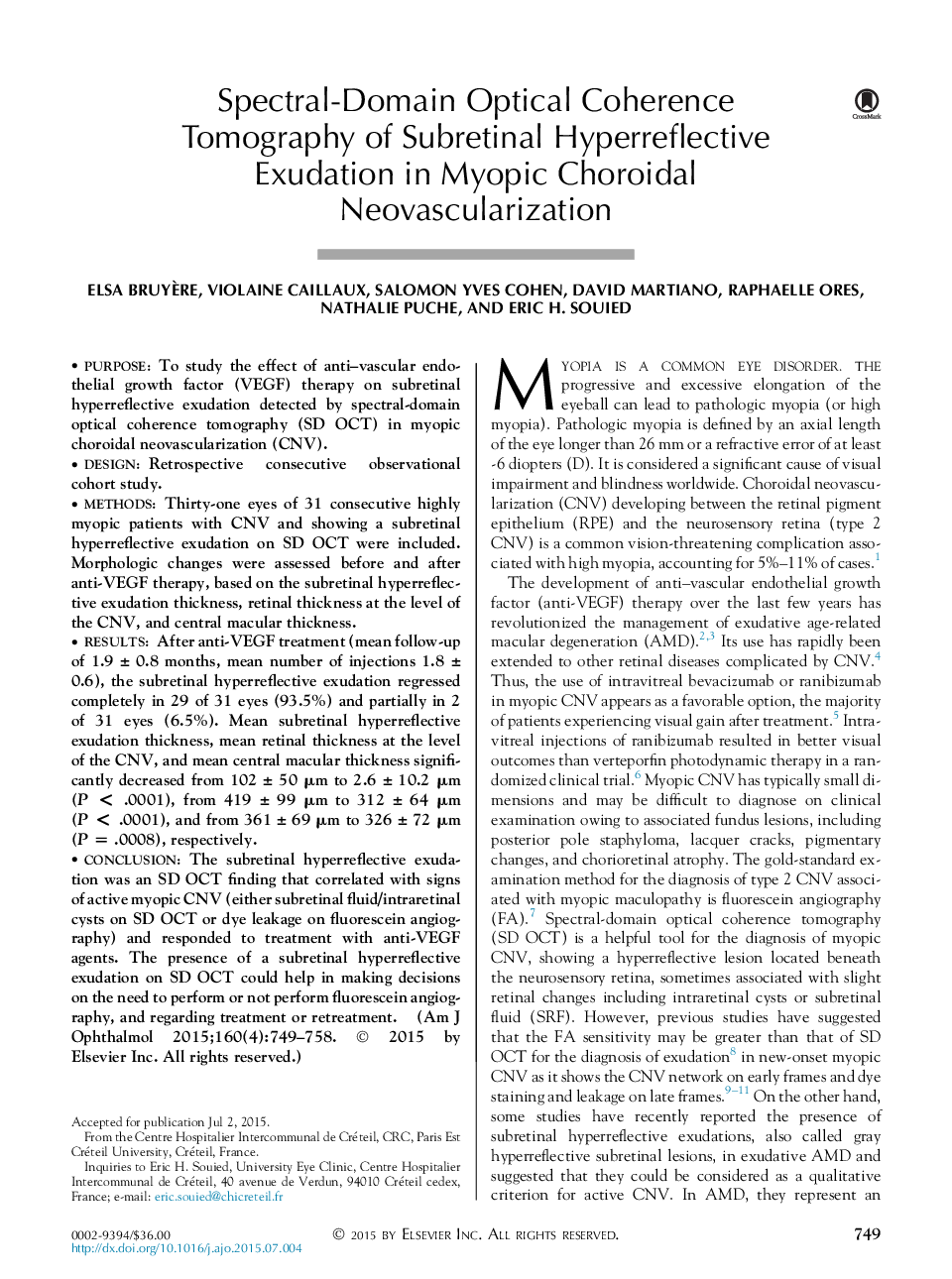| کد مقاله | کد نشریه | سال انتشار | مقاله انگلیسی | نسخه تمام متن |
|---|---|---|---|---|
| 6195029 | 1602119 | 2015 | 11 صفحه PDF | دانلود رایگان |

PurposeTo study the effect of anti-vascular endothelial growth factor (VEGF) therapy on subretinal hyperreflective exudation detected by spectral-domain optical coherence tomography (SD OCT) in myopic choroidal neovascularization (CNV).DesignRetrospective consecutive observational cohort study.MethodsThirty-one eyes of 31 consecutive highly myopic patients with CNV and showing a subretinal hyperreflective exudation on SD OCT were included. Morphologic changes were assessed before and after anti-VEGF therapy, based on the subretinal hyperreflective exudation thickness, retinal thickness at the level of the CNV, and central macular thickness.ResultsAfter anti-VEGF treatment (mean follow-up of 1.9 ± 0.8 months, mean number of injections 1.8 ± 0.6), the subretinal hyperreflective exudation regressed completely in 29 of 31 eyes (93.5%) and partially in 2 of 31 eyes (6.5%). Mean subretinal hyperreflective exudation thickness, mean retinal thickness at the level of the CNV, and mean central macular thickness significantly decreased from 102 ± 50 μm to 2.6 ± 10.2 μm (P < .0001), from 419 ± 99 μm to 312 ± 64 μm (P < .0001), and from 361 ± 69 μm to 326 ± 72 μm (P = .0008), respectively.ConclusionThe subretinal hyperreflective exudation was an SD OCT finding that correlated with signs of active myopic CNV (either subretinal fluid/intraretinal cysts on SD OCT or dye leakage on fluorescein angiography) and responded to treatment with anti-VEGF agents. The presence of a subretinal hyperreflective exudation on SD OCT could help in making decisions on the need to perform or not perform fluorescein angiography, and regarding treatment or retreatment.
Journal: American Journal of Ophthalmology - Volume 160, Issue 4, October 2015, Pages 749-758.e1